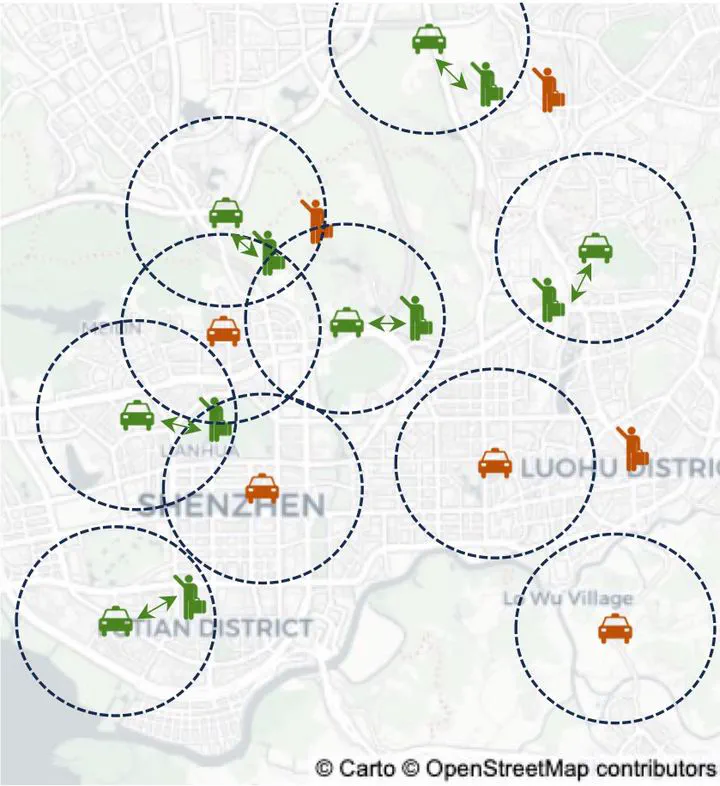Ride-Sourcing Vehicle Rebalancing with Service Accessibility Guarantees via Constrained Mean-Field Reinforcement Learning
Apr 1, 2025·
 ,
,
,
,
,
·
0 min read
,
,
,
,
,
·
0 min read
M. Jusup
K. Zhang
Z. Hu
B. Pásztor
A. Krause
F. Corman

Abstract
The rapid expansion of ride-sourcing services such as Uber, Lyft, and Didi Chuxing has fundamentally reshaped urban transportation by offering flexible, on-demand mobility via mobile applications. Despite their convenience, these platforms confront significant operational challenges, particularly vehicle rebalancing—the strategic repositioning of a large group of vehicles to address spatiotemporal mismatches in supply and demand. Inadequate rebalancing not only results in prolonged rider waiting times and inefficient vehicle utilization but also leads to fairness issues, such as the inequitable distribution of service quality and disparities in driver income. To tackle these complexities, we introduce continuous-state mean-field control (MFC) and mean-field reinforcement learning (MFRL) models that employ continuous vehicle repositioning actions. MFC and MFRL offer scalable solutions by modeling each vehicle’s behavior through interaction with the vehicle distribution, rather than with individual vehicles. This limits the issues arising from the curse of dimensionality inherent in traditional multi-agent methods, enabling coordination across large fleets with significantly reduced computational complexity. To ensure equitable service access across geographic regions, we integrate an accessibility constraint into both models. Extensive empirical evaluation using real-world data-driven simulation of Shenzhen demonstrates the real-time efficiency and robustness of our approach. Remarkably, it scales to tens of thousands of vehicles, with training times comparable to the decision time of a single linear programming rebalancing. Besides, policies generated by our approach effectively explore the efficiency-equity Pareto front, outperforming conventional benchmarks across key metrics like fleet utilization, fulfilled requests, and pickup distance, while ensuring equitable service access.
Type
Publication
arXiv preprint